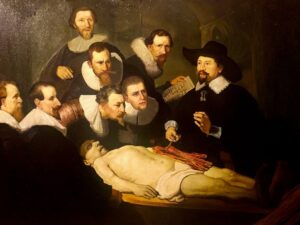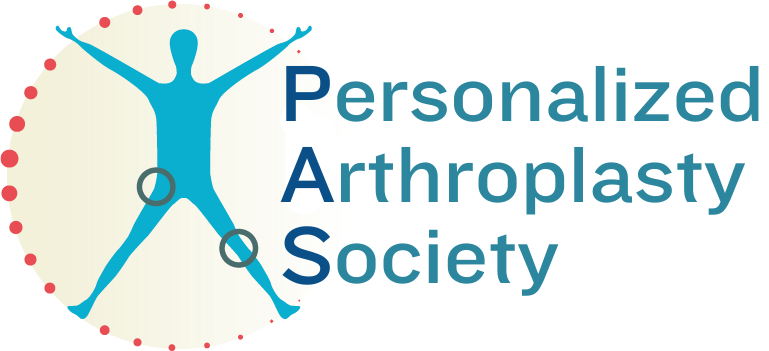ABOUT THE PERSONALIZED ARTHROPLASTY SOCIETY
Why PAS?
 Hip and knee replacements are very successful procedures, despite the fact they are affected by non-negligible rates of residual symptoms and complications. Unsatisfactory clinical outcomes are primarily explained by poor biomechanics of prosthetic joints.
Hip and knee replacements are very successful procedures, despite the fact they are affected by non-negligible rates of residual symptoms and complications. Unsatisfactory clinical outcomes are primarily explained by poor biomechanics of prosthetic joints.
Interestingly, recent advances in both material and design of prosthetic components, as well as precise technologically-assisted implantation, have not been game-changers. This may be due to the fact that gold-standard techniques for implanting hip and knee components aim to implant all patients similarly, thus neglecting the unique joint anatomy and kinematics of each individual.
Systematic techniques for joint replacement were originally devised for simplifying implantation, making it more reliable in the surgeon’s hands.
Since the initial worldwide spread of these systematic techniques in the 70s’ (hip) and 80s’ (knee), the world of arthroplasty has dramatically changed. Surgeons have become much more specialized, often fellowship-trained, with the aim of being an expert of a single joint (hip or knee) or type of procedure (joint replacement). Implant designs have become much more sophisticated; hard-wearing material, available in various shapes, sizes and with high modularity, resulting in a more anatomical fit overall. Finally, precision and accuracy of implantation have significantly improved through the use of assistive technological tools (e.g. computed or robotic-assisted surgery, patient-specific cutting guides) and pre- or intra-operative tri-dimensional dynamic planning, respectively. These changes in practice over the last few decades, combined with recent evidence highlighting the detrimental clinical effect of neglecting individual joint anatomy and kinematics, have led to the development of a more personalised philosophy for arthroplasty.
In order to improve clinical outcomes of prosthetic joints, more personalised and anatomical/soft-tissue friendly techniques have recently been developed. Bone preserving (HR/UKA) and/or Kinematic alignment techniques for implanting hip (THR/HR) and knee (UKA/TKA) components are therefore gaining popularity. These techniques aim to reproduce patients’ native anatomy and physiological joint laxity, therefore improving the prosthetic hip/knee kinematics and functional outcomes. Compared to conventional techniques, personalized hip and knee replacements seem to be clinically advantageous. In addition, they often enable preservation of bone stock (partial knee replacement and hip resurfacing), easing eventual revision surgery. These advantages are becoming even more important in the current environment, where patients are younger, with higher expectations and a longer life expectancy.
We came to the decision to create an international society named “Personalized Arthroplasty Society” (PAS) that will pave the way for the paradigm shift from systematic to personalized surgery.
- To improve the profile of the ‘Personalized Arthroplasty’ philosophy, through publications (research articles and textbooks) and educational events such as congresses and workshops.
- To foster networking, information sharing, mentoring, career opportunities, leadership training, and professional development in the field of ‘Personalized Arthroplasty’.
- To standardise the teaching of ‘Personalized Arthroplasty’ through textbooks, articles (peer-reviewed PAS edition published by OTSR journal), educational events (annual congress, webinars, workshops), and fellowship travel tours.
- To assess & refine ‘Personalized Arthroplasty’ via support of research & audit projects.
